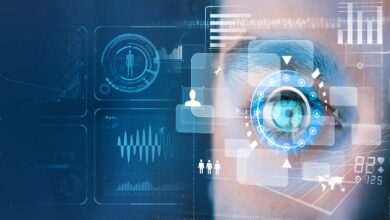Introduction to Deep learning for computer vision
-
What is Deep Learning?
Deep learning machine learning uses artificial neural networks to mimic the human brain’s operation. It would be similar to teaching a machine to spot patterns and make judgments but at an enormously quicker rate. Imagine trying to recreate the learning process of the human mind.
-
The Link Between Vision and DL
Just as our eyes send information to the brain, which deciphers it, deep learning models process visual data to understand and categorize it. Vision is our brain’s interpretation of what our eyes see. Similarly, computer vision is about teaching machines to “see.”
The Evolution
-
Early Stages of Computer Vision
Before deep learning took the stage, computer vision relied heavily on manual feature extraction. This implies that specialists must instruct the machine on what to search for. It’s like attempting to locate a needle in a haystack without understanding what a hand looks like.
-
Rise of Neural Networks
Enter neural networks. They brought a paradigm shift by learning features directly from data. Picture it as giving the computer a magnifying glass to find that needle.
Advancements in Deep learning for computer vision
-
Convolutional Neural Networks (CNNs)
CNNs are the backbone of most computer vision systems today. It’s like using multiple magnifying glasses of varying focus to inspect every inch of an image, ensuring nothing is overlooked.
-
Transfer Learning
Transfer learning is like borrowing knowledge. Instead of starting from scratch, models utilize pre-learned information to recognize new patterns. Think of it as leveraging a friend’s expertise in a trivia game.
Real-world Applications
-
Medical Imaging
Doctors can now detect diseases earlier and more accurately. Imagine a world where the smallest tumor doesn’t go unnoticed, potentially saving millions of lives.
-
Autonomous Vehicles
Cars that drive themselves! It’s not science fiction anymore. They “see” and “learn” from the environment to make split-second decisions, ensuring passenger safety.
-
Augmented Reality
AR transforms our interaction with the digital world. It’s like looking through a magic lens that overlays digital information onto our physical environment.
Challenges and Future Potential
-
Limitations of Current Tech
Every technology has its kryptonite. For deep learning, it’s the requirement of vast amounts of data and, sometimes, the inability to explain its decisions. Have you ever wondered why your AI assistant occasionally misinterprets your commands?
-
Opportunities for the Future
There are no boundaries! Deep learning for computer vision will improve accuracy and applicability as models become more effective and data becomes more plentiful. Can you envision a world where machines assist in every visual task?
Conclusion
Deep learning for computer vision is akin to giving machines a pair of super-powered glasses. They ” see ” and “understand” the world around them. From revolutionizing healthcare to making roads safer, the possibilities are endless. But, as with any evolving tech, challenges lie ahead. However, the promise and potential are undeniable. So, are you ready to embrace this visual revolution?
FAQs for Deep learning for computer vision
Why are CNNs popular in computer vision?
CNNs can process spatial data and hierarchically understand image patterns, making them ideal for image recognition.
How does deep learning help in medical imaging?
Deep learning models can detect abnormalities, tumors, and diseases with high precision by analyzing medical images.
Are there any concerns about using deep learning in autonomous vehicles?
Safety and decision-making transparency are major concerns. Continuous research aims to address these challenges.
Is deep learning the future of all visual tasks?
While deep learning holds immense potential, certain tasks might still require human intuition and expertise.
Rate our Article (Deep learning for computer vision: A Comprehensive Guide)How much do you like our Article?


